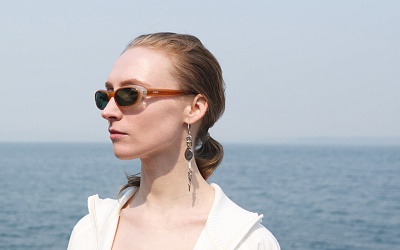Traditional Souvenirs
from Russia and Vladivostok
Entering "a la russe" style souvenir shop is like stepping into the fairy tale "The Scarlet Flower." You are looking for a flower, and there it is - a flower! Actually … it is the ancient enigma of the Russian people.
Khokhloma is wooden "gold" in Russia. The artist’s brush transforms black, gold, red, and sometimes green paint into flowers, juicy strawberries and rowanberries. Khokhloma painting – which is about 400 years old – adorns dishware, souvenirs, jewelry, and furniture. Chinese tourists appreciate Khokhloma dishes for their practicality; the works are covered with a special varnish that is hardened in an oven at a temperature of 120 degrees, so one can eat and drink from them. The main thing is to be sure they are not Chinese fakes. Genuine Khokhloma has a smooth flat surface, is warm to the touch, and bears an original oval label of the enterprise JSC "Khokhloma Painting".
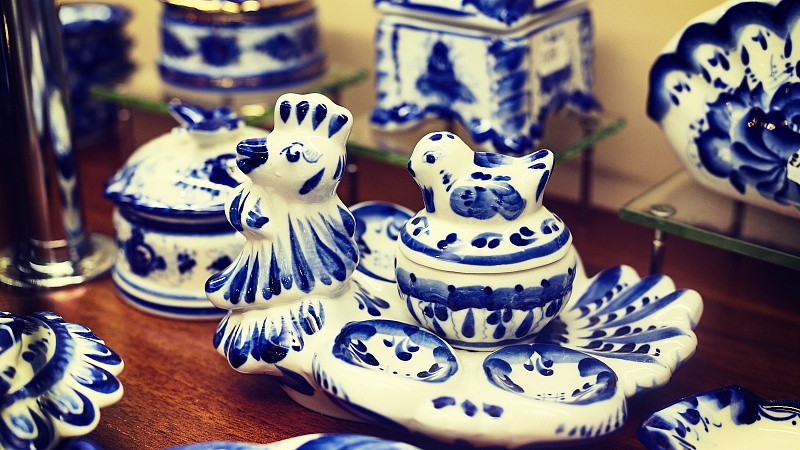
Blue roses and strange blue birds on white porcelain – this is Gzhel. It is often interesting to visitors from South Korea. Gzhel porcelain is thin and translucent, and the painting is done only by hand with cobalt black paint, which after firing plays all shades of blue.
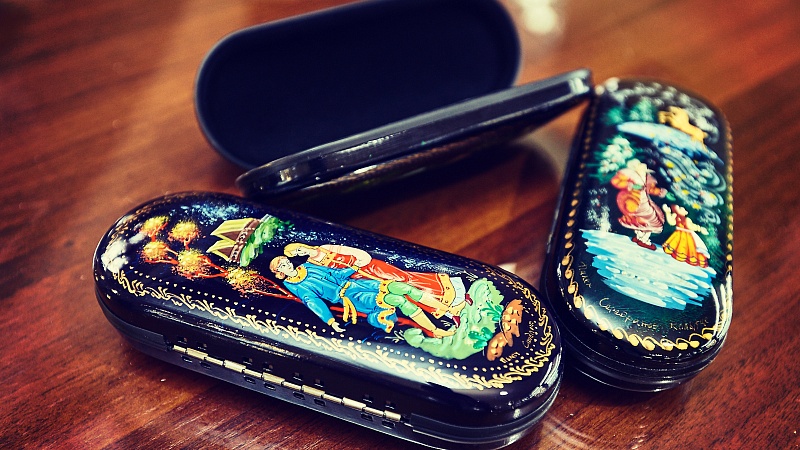
Tourists are transfixed by small jewelry boxes, brooches, and hairpins – seeing them as a picture book. On each piece, the brush of a skillful artist was able to fit stories about heroes of Russian fairy tales and legends, about the time of year, about peasant life. Fedoskino, Palekh, Kholuy lacquer miniatures - original Russian-style paintings on papier-mache.
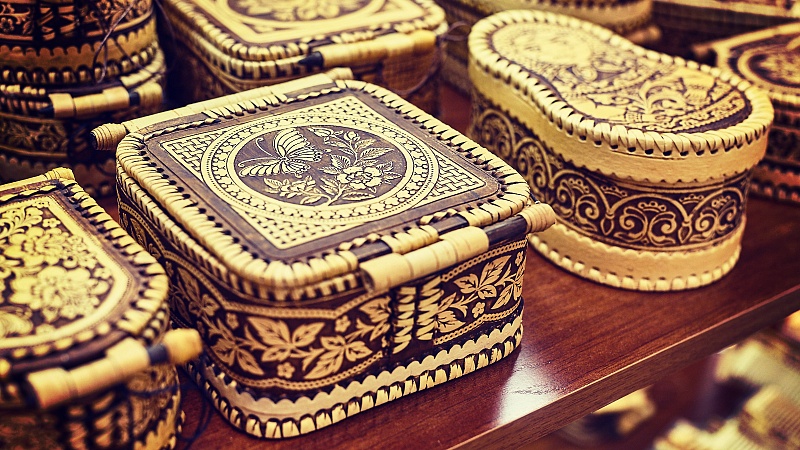
"It is carved birch" - how else to explain “beresta” to a foreigner; it is traditional Russian utensils and knickknacks made from the top layer of birch bark, adorned with elaborate carved patterns. The bark of a birch tree contains silver ions, so these bark objects have antibacterial properties. Interior design magazines call it eco-minimalism, and it is in vogue now.
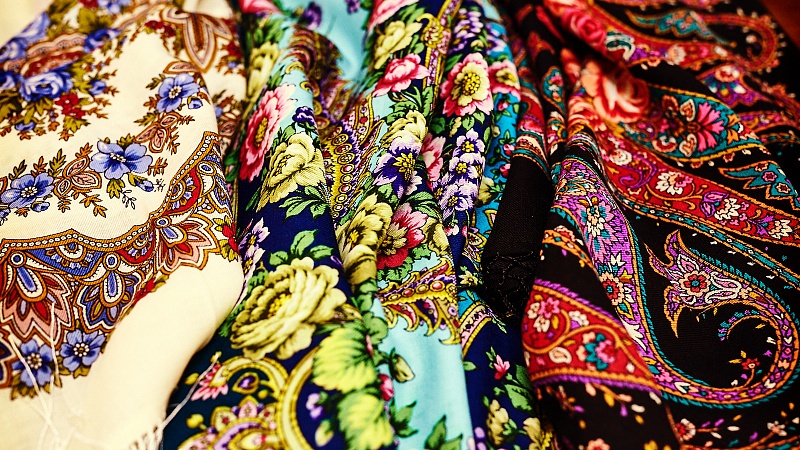
Young women from Japan purchase out of hand two Pavloposadskiye kerchiefs at a time. Presumably, they too are aware of the latest fashion trends. The shawls, painted fantastic colors, can be sewn together and made into an ethno-style skirt or dress. The label “Pavloposadskiye Kerchief Manufacturer" guarantees that the scarf is made of natural fabric, and each of the drawings on it is a work of art.
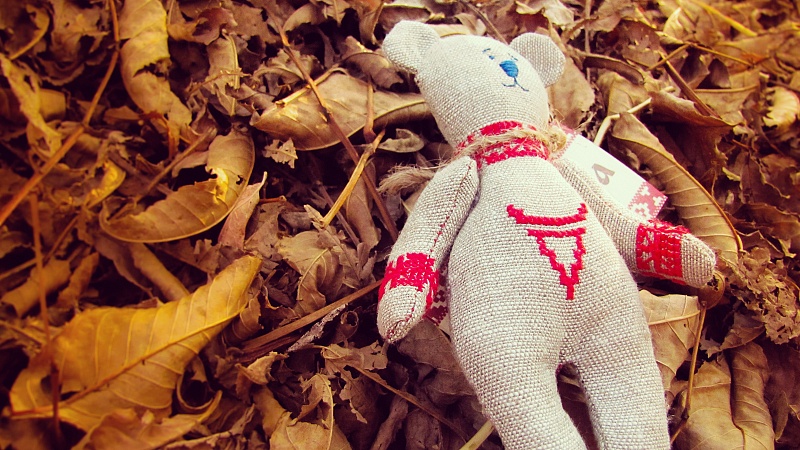
"I'm going to Japan. Embroider some gift that you can’t go out and buy." With this friendly request, the story of the Vladivostok brand “Smorodina” (Currant) began. Designer Veronika Rodina creates clothes, souvenirs and toys with traditional Slavic embroidery. The mythology and traditions of ancient Rus are passed from generation to generation through the guarded, encrypted symbols on these Slavic ornaments. Unraveling those symbols is a challenging quest not only for a foreigner, but also for a contemporary Russian resident. What seems to be an embroidered cross and fish magnet is, in fact, Odal (rune, a character of certain ancient alphabets) – that symbolizes clan, family, and native land. A linen teddy bear stuffed with fragrant wood chips is not simply a toy. People who know recognize it as the symbol of Veles – the Slavic god of fertile land and family farming, protector of mechanical and industrial arts.
Works of Vladivostok masters are sold in the hand-made shop "Kucha-Mala" on Fokina Street, building 8b, room 25; telephone: +7 (423) 273-31-26
Russian folk arts and crafts can be purchased at the company shops "VladGifts": Aksakovskaya Street, building 3a (at the funicular observation platform), and on the Naval Fleet Embankment, building 1a, 2nd and 3rd floors (near central square). Hours of Operation: 9:00-20:00; telephone: +7 (423) 200-12-15
Specialty shop “Pavloposadskiye Shawls”: Okeanskiy Ave, building 16 - Shopping Center “Izumrud” (Emerald) on the second floor. Hours of Operation: 10:00-19:00; telephone: +7 (423) 240-20-68
If you liked this article, share it with friends:
Come to Vladivostok!
We recommend
SHOPPING
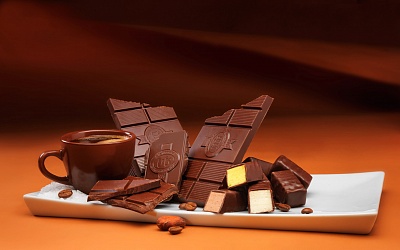
CHOCOLATE AND "PTICHKA" (BIRDIE) WITH THE TASTE OF THE SEA
They may have stolen the name from this legendary product, but it is impossible to take away the taste! So enjoy, and take some with you!
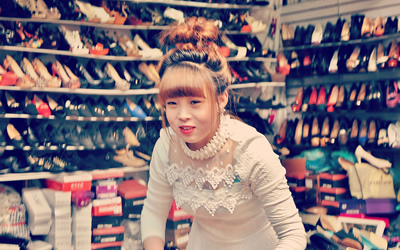
CHINESE MARKETS
Everything here is very inexpensive and of questionable quality. The markets are an ideal place to buy products for one-time use or for authentic Chinese goods.
